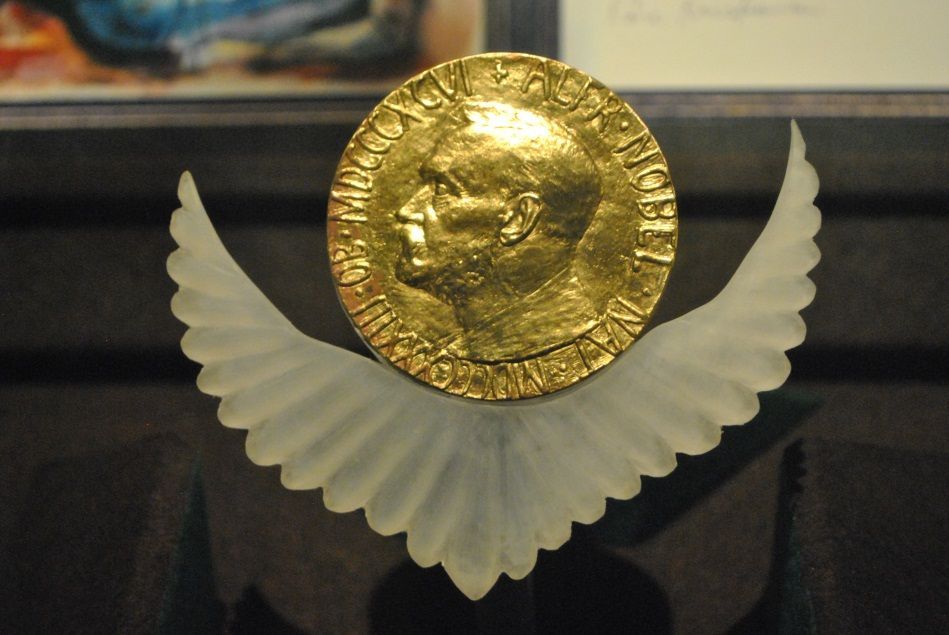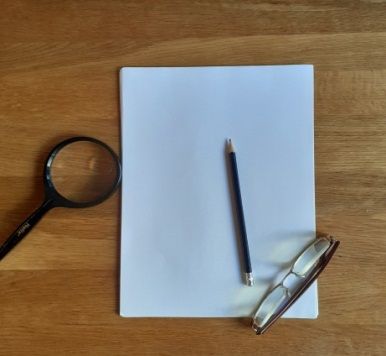An raibh a fhios agat? Did you know?
W. B. Yeats
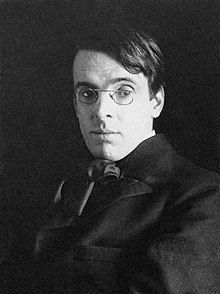 The 'Door of Reconciliation' is an essential part of the tour of St. Patrick’s Cathedral in Dublin. It concerns two families vying for the position of Lord Deputy to Ireland, the king of England’s representative thus. To reconcile to the fact that a continuation of another bout of bloodshed was in no one’s interest, the Fitzgerald’s of Kildare in the person of Gearoid Mór, cut a hole through a door behind which the Butlers of Ormonde were hiding; placed his arm through the door inviting the Butlers to shake hands or avail of the option of depriving him of the said arm as a sign of good faith, to which the Butlers eventually agreed, and so brought an end to the turmoil that saw these warring families inflict yet more pain on each other. This event took place in 1492 in close proximity to Christ Church Cathedral as it happened and spilled over to arrive at the doors of St. Patrick’s. From that incident comes the phrase ‘to chance your arm’ and from that period the door bears the name ‘The Door of Reconciliation’.
The 'Door of Reconciliation' is an essential part of the tour of St. Patrick’s Cathedral in Dublin. It concerns two families vying for the position of Lord Deputy to Ireland, the king of England’s representative thus. To reconcile to the fact that a continuation of another bout of bloodshed was in no one’s interest, the Fitzgerald’s of Kildare in the person of Gearoid Mór, cut a hole through a door behind which the Butlers of Ormonde were hiding; placed his arm through the door inviting the Butlers to shake hands or avail of the option of depriving him of the said arm as a sign of good faith, to which the Butlers eventually agreed, and so brought an end to the turmoil that saw these warring families inflict yet more pain on each other. This event took place in 1492 in close proximity to Christ Church Cathedral as it happened and spilled over to arrive at the doors of St. Patrick’s. From that incident comes the phrase ‘to chance your arm’ and from that period the door bears the name ‘The Door of Reconciliation’.
That’s brilliant Antóin but what has that to do with W.B. Yeats I hear you shout? Some sources suggest that his great- great- grandfather Benjamin married a certain Mary Butler, a direct descendant of the Butler’s of Ormonde apparently. They decided to keep the name Butler after they tied the knot hence W.Bs connections. Alas, reality interferes with a good story and I am resigned to inform you that this story is but mere speculation. However, we can justifiably announce that when we speak respectfully of ‘standing on the shoulders of giants’ Yeats looms large in the company of the greats. In this overview we can merely scratch the surface of one of Ireland’s greatest poets and dramatists.
Introduction
William Butler Yeats was born in Sandymount Dublin on 13th June 1865 albeit his family originally hailed from Lancashire in England. Indeed Brown (2001) posits that the earliest records of the Yeats family in Ireland refers to one Jervis Yeats from Yorkshire who came through the Williamite Wars and set himself up as a small trader. He obviously enjoyed a degree of success as he rose to the position of wholesale linen-merchant. He was also a well-known painter and died in 1712 it is said. William’s father John Butler Yeats was born in the parish of Tullyish, County Down in 1839, The youngest of three children (the other two didn’t survive). His father in turn was the Reverend William Butler Yeats who held the position of Rector in the Church of Ireland in Tullyish. The religious path was apparently a family trait as William’s father before him had been Rector in Drumcliffe parish in County Sligo, according to Brown (2001 p.3). Thus the family had obtained a degree of respectability and were of the ruling classes, it could be termed.
Sligo-Little Belfast
William’s introduction to Sligo occurred when he was seven years old when along with the other children they accompanied their mother to Sligo. They returned to London in 1874. But Sligo had a magnetic pull on him it appears and it is fitting that today he resides with the immortals there under the green sod of silence. Not everything he found to his liking of course and his disappointment in Countess Markievicz who joined the ranks of the revolutionaries in 1916 is well versed. Yeats was well acquainted with the Gore-Booths and stayed at Lissadell House in Sligo in 1894. He first met Mrs.Olivia Shakespear at this juncture.The town had close connections with Ulster particularly in the commercial sense in the Linen Trade. It was aslo a busy port and was dubbed 'Little Belfast.' His wife's family the Pollyexfens were a wealthy family who amongst other things were heavily involved in shipping.William’s father was a painter having given up the potential of becoming a member of the legal profession, who in turn found employment hard to come by. This resulted in the family for the first few years of William’s life moving between Ireland and England. His schooling up to the age of eleven was conducted at home for the most part by his parents. On reaching his eleventh birthday he started school at Godolphin’s in London in January 1877 where he would spend four years.
Not a brilliant student by all accounts, described as very poor at spelling, he was the subject of ridicule owing to his Irish connections.To quote from Biggs (2016) Yeats when recalling his time at Godolphin’s said: “it had the rough manners of a cheap school, whose pupils were the sons of failures”. The family having returned to Dublin again in 1881 took up lodgings eventually in Howth where the young William was exposed to the traffic and travails of painters and writers who frequently called to his father’s studio. He went on to study at the Metropolitan School of Art from 1884 to 1886 according to Biggs ( 2016) and it was at this juncture that he dipped his toes into the water so to speak when his first works were published in the Dublin University Review in 1885 Biggs ( 2016) continues. The Yeats’s again landed in London in 1887 but it was in 1889 that William had The Wanderings of Oisín and Other Poems published.
The Rhymers Club
Yeats along with others was instrumental in setting up this august assembly in 1891 in London. It was an avenue for aspiring poets and writers to come together and wax lyrical perhaps about their aspirations and endeavours. To quote Yeats: “We read our poems to one another and talked criticism and drank a little wine.” But to put it more succinctly, according to Biggs (2016) “The club’s insistence on rhyme, cadence, form and style would influence Yeats’s work for the rest of his life” It was at this juncture that he also furthered his interests in the occult, Biggs (2016) continues by joining the Hermetic Order of the Golden Dawn, a society that espoused interest in the supernatural.The Irish Literary Society was also a product of William's endeavours which proclaimed it's arrival in the same year to be followed by it's Dublin counterpart the following year. It was during this period that Yeats penned the play The Countess Cathleen which opened at the Antient Concert Rooms, Brunswick Street ( now Pearse Street). It caused some controversy in that it portrayed a lady of noble birth who sells her soul to the devil in order that her people would be saved from the ravages of starvation. It opened in 1899.
Maud Gonne
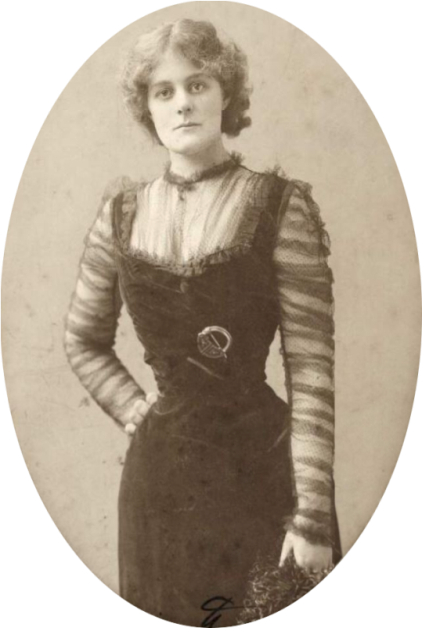 Maud Gonne and the story of W. B. Yeats are forever entwined. She was undoubtedly the love of his life. The fact that she declined his numerous proposals of marriage and quite unexpectedly by all accounts married Major John McBride, no doubt left an indelible mark on him.Their first encounter took place on 30th January 1899 when a beautiful young woman called to the Yeats residence In London at the behest of one John O'Leary, according to Stanley (1996).O'Leary had supplied her with a letter of introduction to John Yeats. Over the next short while it appears that she made clear to her new found acquaintances her deep interest in Irish affairs; her support for the cause of Irish independence and the campaign to prevent the eviction of tenant farmers from their homes, Stanley ( 1996) continues and also to her " virulent anti-British outlook".Yeat's fell in love with her. Unfortunately that affection would not be reciprocated. It later transpired that there had been a brief relationship between them, according to Stanley (1996). Indeed he continues that she quite unexpectedly married Major John MacBride in 1903 in Paris. Alas MacBride was executed in 1916 for his part in the Easter Rising. Yeats again proposed marriage but again his overtures were rejected. Maud Gonnes marriage to MacBride was short-lived. However, as if by accident Yeats would marry one Georgina Hyde-Lees in 1917 on the rebound, as described by Brown (1999). A footnote to his relationship with Gonne however is that it was she apparently who persuaded him to join the Irish Republican Brotherhood ( IRB) according to Moran (2013).
Maud Gonne and the story of W. B. Yeats are forever entwined. She was undoubtedly the love of his life. The fact that she declined his numerous proposals of marriage and quite unexpectedly by all accounts married Major John McBride, no doubt left an indelible mark on him.Their first encounter took place on 30th January 1899 when a beautiful young woman called to the Yeats residence In London at the behest of one John O'Leary, according to Stanley (1996).O'Leary had supplied her with a letter of introduction to John Yeats. Over the next short while it appears that she made clear to her new found acquaintances her deep interest in Irish affairs; her support for the cause of Irish independence and the campaign to prevent the eviction of tenant farmers from their homes, Stanley ( 1996) continues and also to her " virulent anti-British outlook".Yeat's fell in love with her. Unfortunately that affection would not be reciprocated. It later transpired that there had been a brief relationship between them, according to Stanley (1996). Indeed he continues that she quite unexpectedly married Major John MacBride in 1903 in Paris. Alas MacBride was executed in 1916 for his part in the Easter Rising. Yeats again proposed marriage but again his overtures were rejected. Maud Gonnes marriage to MacBride was short-lived. However, as if by accident Yeats would marry one Georgina Hyde-Lees in 1917 on the rebound, as described by Brown (1999). A footnote to his relationship with Gonne however is that it was she apparently who persuaded him to join the Irish Republican Brotherhood ( IRB) according to Moran (2013).
A certain Mrs. Olivia Shakespear had made it her business to seek an introduction with Yeats. This occurred in 1895. Again referencing the work of Stanley (1996) we learn that she made it plain that her interests wer not solely in his work as a poet but equally as a man. This presented something of a quandary for Yeats as he still harboured deep feelings towards Gonne and Shakespear herself was married.They decided to engage in an affair as divorce wasn't an option for Shakespear it appeared.To that end Yeats rented rooms in order to meet her on a regular basis. The courtship didn't last long it appears as Yeats infatuation with Gonne was still sensed by Shakespear as something she couldn't countenance, Stanley ( 1996) opines. They eventually parted but would remain close friends right up to the time of her demise some few months before he himself left the stage of life for the last time. Yeats is associated with other women more so in the latter part of his life. We hear mention in Larrissy's (2010) account of a Dorothy Wellesley, Edith Heald, Margot Ruddock.
The Abbey Theatre.
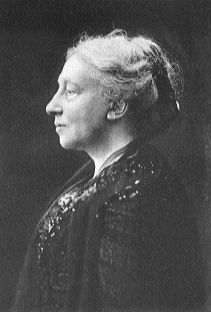 The nineteenth century saw a surge in interest in nationalism in Ireland it is suggested according to Griffith (2014). The 1798 Rebellion was a not too distant memory perhaps but Ireland was no different to other European countries whereby the cry for a new departure was gaining momentum. In Ireland’s case that revival would include a cultural renaissance. One of the mediums that could be harnessed to propel this Gaelic awakening might be a cultural crusade as it were. Theatre in Dublin in particular wasn’t a new departure in that the first theatre that opened its doors to a performance was on Werburg Street a stone’s throw from Dublin Castle, in the seventeenth century. But in terms of promoting Irish culture with the spotlight on Irish Folklore, Mythology and history, this would be a new departure even if the Irish language didn’t feature prominently in this new beginning. In a town known for expressing it’s displeasure for anything that went against the grain, the opening of a Seán O’Casey play,’ The Plough and the Stars caused quite a sensation. That notwithstanding, Yeats in harmony with Lady Gregory and others set about creating the Irish Literary Revival.
The nineteenth century saw a surge in interest in nationalism in Ireland it is suggested according to Griffith (2014). The 1798 Rebellion was a not too distant memory perhaps but Ireland was no different to other European countries whereby the cry for a new departure was gaining momentum. In Ireland’s case that revival would include a cultural renaissance. One of the mediums that could be harnessed to propel this Gaelic awakening might be a cultural crusade as it were. Theatre in Dublin in particular wasn’t a new departure in that the first theatre that opened its doors to a performance was on Werburg Street a stone’s throw from Dublin Castle, in the seventeenth century. But in terms of promoting Irish culture with the spotlight on Irish Folklore, Mythology and history, this would be a new departure even if the Irish language didn’t feature prominently in this new beginning. In a town known for expressing it’s displeasure for anything that went against the grain, the opening of a Seán O’Casey play,’ The Plough and the Stars caused quite a sensation. That notwithstanding, Yeats in harmony with Lady Gregory and others set about creating the Irish Literary Revival.
Yeats met Lady Gregory while on vacation with a Mr.Edward Martyn in France. They were near neighbours apparently. Matryn was himself a nationalist and playright and often visited her. Gregory herself had a growing interest in the collection of Irish folklore. While on such a visit and with Yeats in tow Martyn expressed his frustration at trying to get two plays with an Irish dimension staged as it were , a complaint echoed by Yeats. From this discussion sprang the idea of seeking financial contributions from political and literary figures to hire a theatre and stage two plays, The Heather Field and Yeates's Countess Cathleen according to Griffith (2014). This new beginning would be known as the Irish Literary Theatre with an emphasis on promoting modern Irish dramatic works as oppossed to the old and perhaps tired productions of commercial and political offerings. It was Yates and Gregory who would forge a relationship from which a national theatre over time would spring that being the Abbey Theatre that we know today.Lady Gregory had married a a former Governer of Ceylon Sir William Gregory. Thery had an estate, Coole Park, at Gort County Galway which would feature in the poetry of Yeats. She was born Isabella Augusta Persse on 15 March 1852 in Galway of an Anglo-Irish family.They in turn had a large estate at Roxborough, Roxborough House which was later burnt down during the tragedy that was the Civil War. She had developed a deep interest in Irish history which she had inherited from her Irish -speaking nanny according to Biggs (2016). However, Lady Gregory would maintain a deep interest in what would eventually become the National Theatre, The Abbey.
Despite early set backs with the lack of funds a recurring issue the ultimate prize of establishing a national theatre became a possibility. Others had joined the great crusade such as J.M.Synge, George Russell, Annie Horniman and William and Frank Fay, when in 1904, according to Biggs (2016) the Irish National Theatre Society was founded and a site was purchased in Lower Abbey Street in Dublin. In December 1904 it's first offering was performed, Lady Gregory's play Spreading the News. As a director of the Abbey she retained an active role in it's development until her retirement in 1928 due to ill health. She was a prolific writer it appears but much of her work was never published Biggs (2016) opines and indeed she had became more enveloped in Irish tradition and culture over time. Her final curtain call came on 22May 1932. According to George Bernard Shaw, she was 'the greatest living Irishwoman'. But controversy was never too distant in the early years of the Abbey which would see Yeats in a supporting role.
Controversy arose in 1910 when the theatre failed to close following the death of King Edward the VII on the 6th of May according to Griffith (2014). The theatre had been if you would following a more nationalist path. Horniman who it appears was growing increasingly concerned at this new departure pulled her funding. The theatre was subsequently kept afloat by placing it on the stock exchange according to Griffith (2014). Ultimately this would have the effect of placing the theatre on a professional footing confining it's amateur beginnings to the dustbin of history.Earlier in 1907, J.M.Synges play The Playboy of the Western World had so outraged it's audience that riots subsequently broke out owing to the plays depiction of life in rural Ireland. It was at one of these performances and disruptions that Yeats found himself having to walk on stage to address the gathering. He poured scorn on the audience by admonishing them for their behaviour by declaring 'that they had rocked the cradle of genius'.The 1916 Rebellion placed further pressures on the theatre with dwindling audiences due to the ongoing violence with Abbey Street at it's epicentre, so to speak. The Theatre wasn't spared the ravages of the Civil War in 1922 when again the city was in turmoil losing many of its actors to the conflict. And then in 1926 riots again visited a production at The Abbey this time at a play of Seán O'Casey's, The Plough and the Stars. O'Casey's plays, of which The Plough was the third in a triology was deemed controversial because it portrayed one of the main characters as a prostitute.The Abbey however survived all of these controversies, riots, fires and friction to evolve into the world renown theatre that it is today. Many will be remembered in the rollcall of revisionist sentiment if you would but Lady Gregory was one of it's bedrocks with Yeats it could be argued playing more of a supportive role. But fame would follow.
Senator Yeats
According to Clifford (2015) he used the platform of the Seanad to speak on issues such as Divorce, Censorship and the Irish language. On divorce he appears to have been quite adamant that this position (anti-divorce) would entrench the reality of partition. He also appears to have opposed the imposition as he saw it of the teaching of compulsory Irish in schools. He was appointed to the Senate by the new Irish government in 1923 having supported the Treaty. He spoke many times in the Seanad but his opposition to the Divorce Bill in 1925 is particularly memorable according to Stanley (1996). Being a Protestant himself he proclaimed his sentiments in no uncertain terms: " We ( Protestants) against whom you have done this thing are no petty people. We are one of the great stocks of Europe. We are the people of Burke: we are the people of Grattan: we are the people of Swift, the people of Emmet, the people of Parnell.We have created the most of the modern literature of this country. We have created the best of its political intelligence". Despite this fairly trenchant declaration it does appear that he did express a degree of sympathy towards nationalist aspirations in his earlier life although he did favour Ireland remaining as part of the Commonwealth it appears. He had met people who were pivotal to the cause of Irish freedom such as the Fenian John O'Leary who succeeded in awakening a sense of pride in Yeats as to his Irish identity from both a historic and literaty perspective, according to Stanley ( 1996). However, he was by all accounts disillusioned by the Rising in 1916 albeit with the prevailing wind spoke out against the executions of the leaders of 1916 by the authorities. However, he saw the connection between the Catholic Church and the state as an impediemnt against Ulster, if you would, ever countenancing becoming part of the Republic, according to Biggs (2016).
The Nobel Prize for Literature
For Ireland to have its own roadmap to a dramatic determination was the objective for people like Yeats. Culturally it was deemed imperative for some to make the distinction that Ireland had its own identity that was Gaelic in essence. Yeats, along with others, recognised that one of the best ways to promote this new beginning was via the treadmill of the theatre. To that end the establishment of such a possibility became the focus for people like Yeat’s and Lady Gregory among others, as we have already mentioned. However, It was the awarding of the Nobel Prize for Literature to Yeats in 1923, the first Irish person to achieve such acclaim, that many regarded as the catalyst for putting his country on the international map. So was it regarded by the Dáil and indeed by the laureate himself when he remarked at the awards ceremony that the prize was more a recognition by Europe of the Irish Free State than for himself according to Martin (2019). Indeed the words of the chairman of the academy’s Nobel Committee Per Hallstrom presiding at the ceremony must have been sweet music to the ears of Yeats, when he praised the poet’s ability to ‘‘follow the spirit that early appointed him the interpreter of his country, a country that had long waited for someone to bestow on it a voice’.
September 1913
What need you, being come to sense,
But fumble in a greasy till
And add the halfpence to the pence
And prayer to shivering prayer, until
You have dried the marrow from the bone;
For men were born to pray and save;
Romantic Ireland's dead and gone,
It's with O'Leary in the grave.
Writing in his book of Radio Interviews of Irish Literary Portraits, Rodgers (1972) in his preface sets the scene when he relates his experience of Dublin in 1942 when he remarks that ‘It was in Dublin, the most oral city in Europe’ that he became more acquainted with the gossip and minutiae of Irish literary history. Yeats had died in Cannes France in 1939 and this compilation were reflections from family and friends. Taking from the memories of many of the contributors to the recordings we can discern identification with the great man of letters. But we also glimpse a sense of the ordinary that Yeats was equally, one might argue. Michael O’Donovan writing under the pen-name Frank O’Connor recalls: “There was a peculiar sort of innocence about the man-an extraordinary innocence”. Sean O’Faolain a writer who hailed from Cork recalls an account of a story he heard from Edward Garnett a friend of Yeats. In the care-free calendar of life that is youth, Garnett remembers sharing time with his friend who was so poor apparently that he used to have to black his heels so as to cover up the holes in his stockings. They would kill time it seems by walking from Garnett’s to Yeats's digs as they were called and vice versa all night long wrapped up in their own place while forgetting everything. These reminiscences suggest that Yeats had experienced the igmony of want.
Conclusion
'A poets life is an experiment in living’ he wrote and ‘those that come afterwards have a right to know it'. There is no doubt that W. B. Yeats lived an extraordinary life. How much he had in common with ordinary mortals is best left for others to judge. Some accused him of taking refuge in snobbery and manipulation. This ordinary mortal will not hazard a guess. What can be said is that he helped put Irish literature and poetry in particular on the high alter of human appreciation. There is an argument that he was of Anglo -Irish descent and therefore not a true Gael with no sympathy for the language. Indeed, he spoke out against it being taught compulsory in schools. He lived at a time when for some as one commentator put it, ’manners meant more than surface gestures'. He lived a life complete with all of the contradictions that the Ireland of his time produced. Romantic Ireland is a different place today because of people like Yeats one could argue. His place is secured in the annals of the nation. He helped create because that's what poets do. There was 'No Second Troy' in the shape of what he could not have but in the reality that was and is the paradox of where he came from.
I write it out in a verse -
Mac Donagh and MacBrid
And Connolly and Pearse
Now and in time to be
Wherever green is worn,
Are changed, changed utterly:
A terrible beauty is born. W.B. Yeats.
Antóin Ó Lochraigh - Bard & Soloist
Bibliography
Biggs.F. (2016) Irish Wit & Wisdom. Gill Books. Dublin Ireland.
Brown.T. (1999 An exceedingly spirited wife. The Irish Times. Dublin Ireland.
Brown.T (2001) The Life of W.B.Yeats. Gill & MacMillan Ltd. Dublin 12.Ireland.
Broughton.A. (1903) Portrait of Yeats Accessed on Wikipedia 9th May 2021
Coburn.A.L. (1908) Portrait of Yeats. Accessed on Wikipedia. Accessed 21st.June 2021.
Clifford.G. (2015) WB Yeats: He cast a cold eye on church and State in Seanad career. Irish Independent Newspapers Dublin Ireland.
Fitzpatrick. D. (1972) Yeats in the Senate. Studia Hibernica pp. 7-26. JOURNAL ARTICLE Liverpool University Press
Foster.R. (2015) Philosophy and a little passion: Roy Foster on WB Yeats and politics
Griffith.L.M. (2014) Stones of Dublin. A History of Dublin in Ten Buildings. The Collins Press, Wilton, Cork. Ireland. ISBN: 978-1-84889-219-4
Haskel. D. (2001) W.B.Yeats. The Kenyon Review New Series, Vol. 23, No. 2, Cultures of Creativity: The Centennial Celebration of the Nobel Prizes (Spring, 2001), pp. 168-175 Published by: Kenyon College
Larrissy. E. (2010) Irish Writers in their Time W .B. Yeats. Irish Academic Press. Dublin Ireland.
Martin.P. (2019) WILLIAM BUTLER YEATS WINS NOBEL PRIZE IN LITERATURE 14.NOVEMBER.1923. Irish Newspaper Archive.
Martin. S. 2013) Great Irish People. Liberties Press, Terenure Dublin Ireland.
Purdy.J.E. (1900) Portrait of Maud Gonne. Accessed on Wikipedia 26th.June.2021.
Ryan. S.P. (1961) W.B.Yeats and Thomas McDonagh. Modern Language Notes. Vol. 76, No. 8. pp. 715-719.The Johns Hopkins University Press.USA.
Wikipedia: Lady Gregory pictured on the frontispiece to Our Irish Theatre: A Chapter of Autobiography (1913) Accessed 27th June 2021
Rodgers.W.R. (1972) Irish Literary Portraits. E. Baylis and Son Ltd. The Trinity Press, Worcester, England. ISBN O 563 103
Stanley ( 1996) Famous Dubliners.Wolfhound Press,Dublin Ireland. ISBN 0 86327 532 X
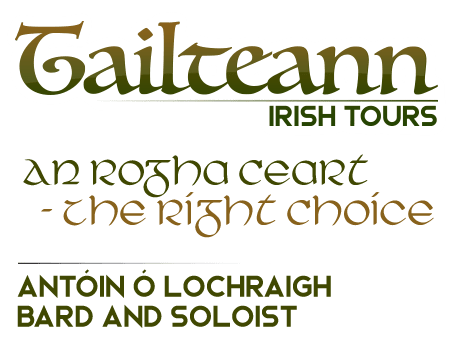
What You Can Expect
A walk through Dublin City in the company of a native Dubliner with the emphasis on history, culture and the great Irish ability to tell a story and to sing a song. In addition, and at no extra cost an actual rendition of a self-penned verse or perhaps a spot of warbling. I'd like to share my love of history with you, after all the past is our present and should be part of our future.
About The Tours
Tours are in English, with Irish translations, where appropriate. I also speak Intermediate level Dutch. Duration: 3 hours approx., with a short break in-between. Tour prices and booking options are available in the booking section.
The contact hours are Monday to Sunday, 09:00 - 20:00 IST.
Special Options
We can also arrange a half-day private tour for a maximum of twelve people. This incorporates a collection of parts of our three Tours combined. Tour duration 4-5 hours approx. A break for refreshments in between. Group of 2: €50 per person, Group of 3: €30 p.p., Group of 4 or more: €25 p.p. Refreshments: €10 approx. (This is an extra). Please contact us for details.
Copyright ©2025 Tailteann Tours
Designed by Aeronstudio™


